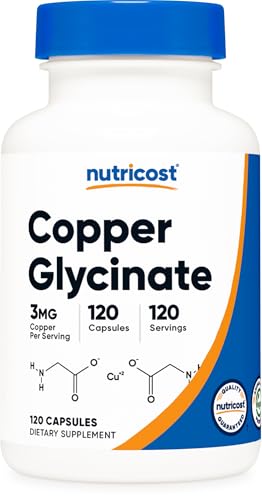Copper IUD Insertion: Pain Relief with Lidocaine Spray
Quick Summary: A recent study found that using a 10% lidocaine spray before getting a copper IUD significantly reduced pain during the insertion process. Women who received the spray reported less pain compared to those who didn't.
Does Lidocaine Spray Reduce Pain During IUD Insertion?
Yes! The research showed that a 10% lidocaine spray helped reduce pain during the insertion of a copper IUD. Women who used the spray reported less pain during the procedure, especially right after the IUD was placed.
Study Details
- Who was studied: 124 women of reproductive age who were getting a copper IUD inserted.
- How long: The study focused on the pain experienced during the IUD insertion.
- What they took: Half the women received a 10% lidocaine spray, and the other half received a placebo (a spray with no active medicine).
What This Means For You
If you're considering a copper IUD, talk to your doctor about using a lidocaine spray. This study suggests it could make the insertion process less painful. It's a simple, non-invasive way to potentially reduce discomfort.
Study Limitations
- The study was done at only one location, so the results might not be exactly the same for everyone.
- The study only measured pain during the insertion, not how you feel afterward.
- The amount of lidocaine spray used wasn't specified, and the long-term effects weren't studied.
- The study didn't look at different groups of women (age, race, etc.) to see if the results varied.
Important Note: Always discuss any medical procedures or treatments with your doctor. This information is for educational purposes and is not a substitute for professional medical advice.
Technical Analysis Details
Key Findings
The study concluded that 10% lidocaine spray significantly reduces pain during copper intrauterine device (Cu-IUD) insertion. Women in the lidocaine group had lower median pain scores on a 10-cm visual analogue scale (VAS) immediately post-insertion (2.95 vs. 5.00 in placebo, p=0.002) and during critical steps like tenaculum use and uterine sounding. A smaller proportion of lidocaine users reported moderate-to-severe pain (VAS≥4) during these steps compared to placebo (p<0.05). Pain increased most sharply immediately after Cu-IUD placement, but lidocaine mitigated this spike (median change from baseline: 1.85 vs. 3.60 in placebo, p=0.004).
Study Design
This was a randomized, double-blind, placebo-controlled trial conducted in 2021. A total of 124 reproductive-age women undergoing Cu-IUD insertion were equally randomized into two groups (62 per group). Pain was assessed via VAS at baseline and during procedural steps (cervical preparation, tenaculum placement, uterine sounding, IUD insertion). The study design minimized bias through blinding and randomization, though it was limited to a single center and short-term pain evaluation.
Dosage & Administration
Participants received 10% lidocaine spray (exact volume unspecified) or a placebo spray applied topically to the cervix and cervical canal prior to IUD insertion. The spray was administered immediately before procedural steps, with pain scores recorded at each stage.
Results & Efficacy
- Immediate post-insertion pain: Lidocaine group reported median VAS 2.95 (IQR: 1.00–5.63) vs. 5.00 (IQR: 3.35–7.00) in placebo (p=0.002).
- Pain during uterine sounding: Lidocaine reduced median VAS by a statistically significant margin (specific values not provided).
- Proportion with VAS≥4: Significantly lower in lidocaine group during sounding and post-insertion (p<0.05).
- Pain change from baseline: Lidocaine group increased 1.85 (IQR: 0.08–4.03) vs. 3.60 (IQR: 2.40–5.80) in placebo (p=0.004).
All outcomes demonstrated statistically significant differences (p<0.05), indicating robust efficacy for lidocaine in reducing procedural pain.
Limitations
- Single-center design: Limits generalizability to broader populations.
- Self-reported pain: Subjective VAS measurements may introduce variability.
- Short-term follow-up: No assessment of post-procedural pain or systemic lidocaine absorption.
- Unspecified spray volume: Dosing consistency and safety (e.g., toxicity risks) were not evaluated.
- Narrow demographic scope: No details on age, race, or parity differences. Future studies should explore long-term pain, adverse effects, and optimal dosing.
Clinical Relevance
For individuals undergoing Cu-IUD insertion, 10% lidocaine spray offers a non-invasive, effective pain management option during the procedure. The reduction in median VAS scores suggests it could improve patient tolerance and willingness to adopt IUDs. However, pain was not fully eliminated, and systemic safety remains unaddressed. Clinicians might consider this method as part of a pain-reduction protocol, though further research is needed to confirm durability and safety in diverse populations.
Study Link: PubMed - 10% Lidocaine Spray for IUD Pain
Trial Registration: NCT03870711
Original Study Reference
10% lidocaine spray for pain control during intrauterine device insertion: a randomised, double-blind, placebo-controlled trial.
Source: PubMed
Published: 2021
📄 Read Full Study (PMID: 32591417)




